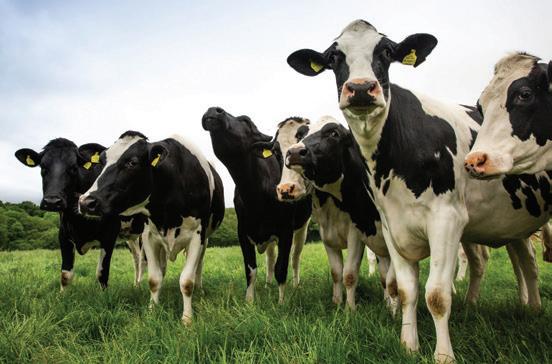
1 minute read
Livestock
A healthy herd is a happy herd – animal health and happiness as important as beef and milk price for UK producers
Survey reveals beef and dairy producers rate animal health as number one care factor
Advertisement
British beef and dairy producers prioritise animal health as the number one care factor on their farms, ahead of milk and beef price, according to a new survey commissioned by feed supplier, KW Feeds.
While milk and beef prices came a close second, both beef and dairy producers also rate animal happiness as one of the most important care factors on their units.
Based on the average response from the total responses received, cow health was the most important factor for dairy farmers (18%), ahead of milk price (15%) and cow happiness at 14%. Beef producers scored similarly, with animal health at 20%, ahead of beef price and animal happiness, both at 16%.
“What this survey reveals, is that refreshingly our farmers are recognising the direct correlation between a healthy, happy herd, and a profitable herd,” says KW Feeds ruminant technical manager Georgie Croxford. Environmental goals The survey, commissioned to understand farmers attitudes to their herd, feeding and feed strategies, considering the unprecedented price increases for feed and fertiliser during 2022, also reveals environmental considerations are becoming increasingly important.
AMP grazing proves its resilience in drought
The use of adaptive multipaddock grazing has seen an Oxfordshire farm maintain cattle growth rates without the need for supplementary feeding this summer.
FAI Farms farm manager, Silas Hedley-Lawrence, says adaptive multi-paddock (AMP) grazing, which is being trialled by FAI as part of a four-year project with McDonald’s UK and Ireland, has been invaluable during one of the hottest and driest summers on record.
He believes farmers interested in becoming more resilient to future weather extremes should consider AMP grazing - which involves ensuring there is no bare soil, leaving grass to grow longer, and grazing a high density of livestock in a defined area for a short period of time, followed by long rest periods.
“Some livestock farmers will graze grass right down to the ground before moving cattle on. For those that did that in May and early June of this year, everything











